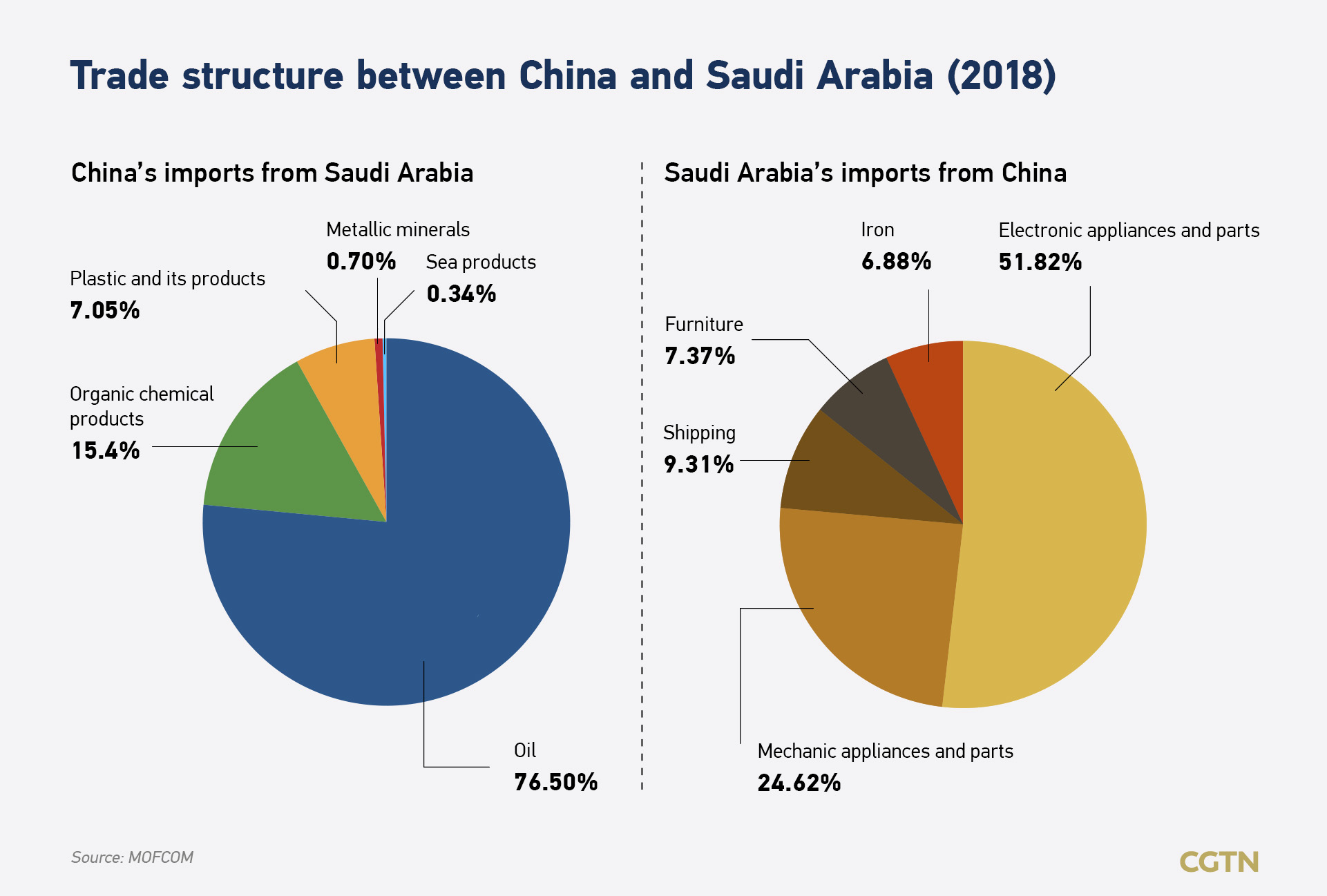
Graphics: How is BRI bolstering China-Saudi Arabia ties?
Besides oil, China and Saudi Arabia also cooperate in renewable energy. In May, China’s Silk Road Fund has completed the purchase of a 49-percent stake in the renewable energy platform of Saudi Arabia’s ACWA Power Renewable Energy Holding Ltd, which holds 1,668 MW of concentrated solar power, solar photovoltaic, and wind assets in the United Arab Emirates, South Africa, Jordan, Egypt, and Morocco.
The year 2020 marks the 30th anniversary of China and Saudi Arabia establishing diplomatic relations. Cooperation between the two countries significantly deepened under the Belt and Road Initiative (BRI), with frequent high-level contacts and a series of strategic partnerships.
The China-proposed BRI and Saudi Arabia’s 2030 Vision share key strategic alignments. Within the rapidly developed bilateral ties in recent years lies fruitful cooperation in energy, trade, commerce and investment sectors. In February 2019, Saudi Arabia signed over 30 economic cooperation agreements with China worth a total of $28 billion.
China is the largest trade partner of Saudi Arabia, since surpassing the United States in 2011. The year 2019 marked a record high of trade worth $78.18 billion between the two countries, an increase of 23.29 percent year on year.
As China’s largest trade partner in Western Asia and Africa, Saudi Arabia’s exports to China reached $54.26 billion in 2019, 18.23 percent higher than the previous year. China’s exports to Saudi Arabia hit $23.92 billion, increasing by 36.54 percent on yearly basis.

Energy cooperation is a cornerstone of China-Saudi Arabia’s trade relations. Although in the first nine months this year Russia ranked first as China’s largest crude oil supplier, Saudi Arabia regained its leading position in September after a two-month replacement by Russia.
In the first nine months 2020, China’s crude oil imports increased by 13 percent, attributed to a relatively controllable epidemic situation domestically and refineries increased production to keep up with the rapid recovery in demand.
Besides oil, China and Saudi Arabia also cooperate in renewable energy. In May, China’s Silk Road Fund has completed the purchase of a 49-percent stake in the renewable energy platform of Saudi Arabia’s ACWA Power Renewable Energy Holding Ltd, which holds 1,668 MW of concentrated solar power, solar photovoltaic, and wind assets in the United Arab Emirates, South Africa, Jordan, Egypt, and Morocco.
This is the third cooperation between ACWA Power and the Silk Road Fund. Before this, the two parties jointly participated in the investment in two projects in the UAE, including the Hassyan power plant complex that uses clean coal technology to generate electricity, and the solar power project in the fourth phase of the complex.

Infrastructure poses an important place in China-Saudi Arabia cooperation. In August 2019, the China Railway Construction Corporation Limited (CRCC) signed a long-term contract with the Saudi Arabian National Petroleum Corporation (Aramco) for the energy and industrial hub King Salman Energy Park, known as Spark, building its infrastructure and pipeline. The contract values of 983 million rials (about $262 million).
Amid the pandemic, on April 16, the CRCC won a bid in Saudi Arabia, which is intended to help improve transport capacity of the No. 2 freight railway between Dammam and Riyadh.
















